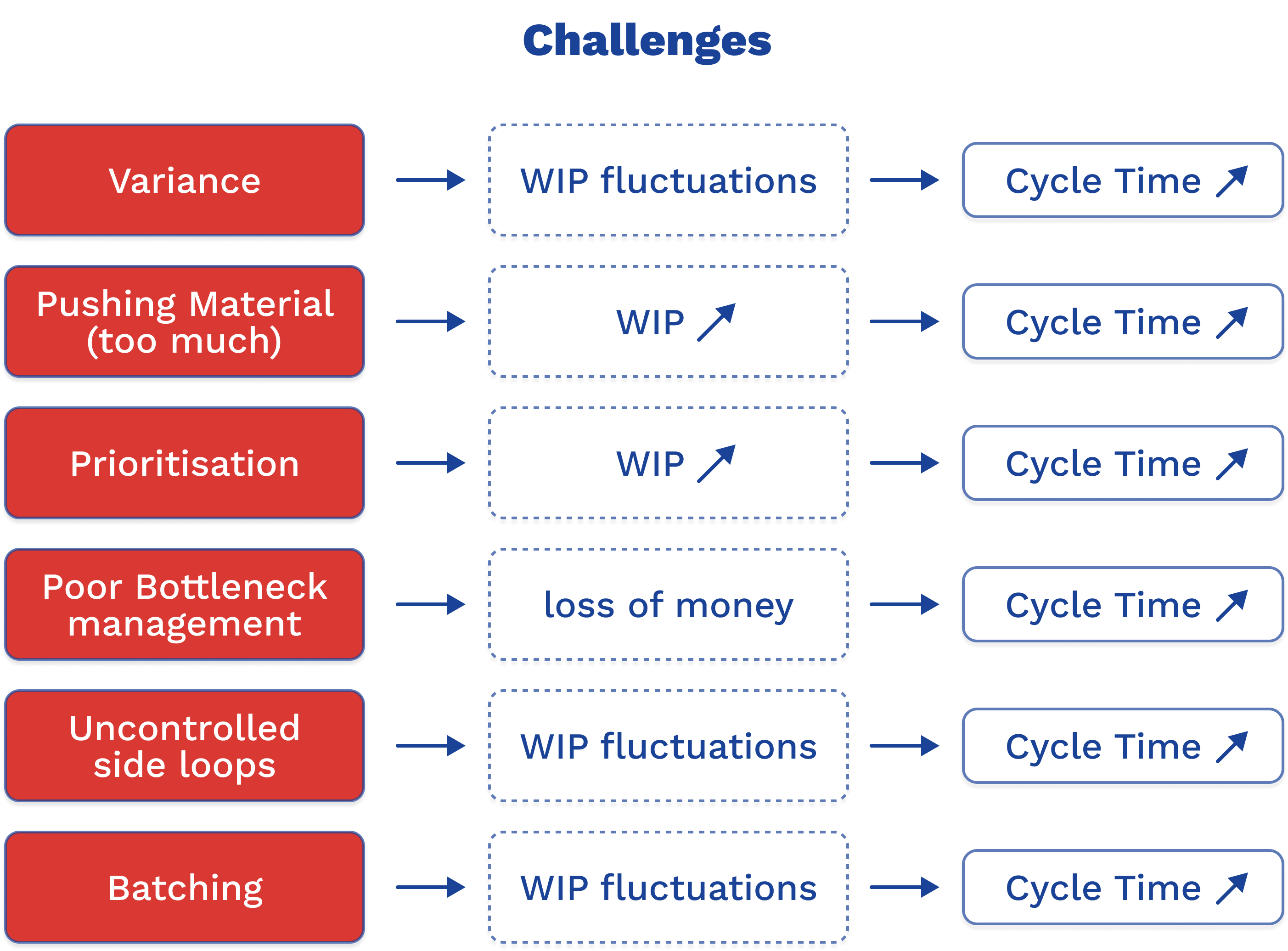Production Scheduling 101: Everything You Need to Know
In manufacturing, efficiency is everything. To meet demand, optimize resources, and deliver products on time, manufacturers rely on production scheduling. This process helps businesses coordinate their operations, ensuring that raw materials, labor, and machines are aligned to produce goods as efficiently as possible.
Understanding Production Scheduling in Manufacturing
Production scheduling in manufacturing refers to the process of planning and organizing production activities to achieve optimal efficiency. It ensures that resources are allocated effectively and that production flows smoothly with minimal delays.
A well-designed manufacturing production scheduling software enables companies to automate scheduling tasks, reducing errors and increasing responsiveness to demand fluctuations. These tools streamline operations by providing real-time visibility into production schedules, inventory levels, and machine availability.
Typical Production Challenges & How to Overcome Them

Manufacturers face several challenges in production scheduling, including:
-
High work-in-progress (WIP) leading to increased cycle times
-
Frequent rescheduling due to unexpected disruptions
-
Poor prioritization of production tasks
-
Lack of real-time data exchange between planning and execution
-
Limited control over bottlenecks and constraints
To alleviate these challenges, automation is key. Implementing manufacturing production scheduling software allows companies to:
-
Automate data collection and scheduling decisions
-
Improve order sequencing and capacity adjustments
-
Reduce manual planning errors and increase efficiency
-
Enhance real-time communication between production teams
Once automation is in place, businesses can shift their focus to continuous improvement and enhanced manufacturing performance by refining their scheduling logic and making data-driven decisions.
Setting the Right KPIs for Production Scheduling
To measure the effectiveness of a production scheduling software for manufacturing, companies must define and track key performance indicators (KPIs). Some essential KPIs include:
-
Cycle Time Reduction – Lowering the time required to complete a production cycle.
-
On-Time Delivery (OTD) Rate – Ensuring customer orders are met as scheduled.
-
Work-in-Progress (WIP) Levels – Managing WIP to avoid excess inventory and delays.
-
Resource Utilization – Maximizing labor and machine usage efficiently.
-
Throughput – Increasing the number of units produced within a given time.
By tracking these KPIs, businesses can fine-tune their production scheduling in manufacturing and continuously optimize performance.
How Production Scheduling Improves Manufacturing Performance
A well-structured production scheduling system leads to numerous benefits, including:
-
Improved predictability and feasibility checking – Ensuring production plans are realistic and executable.
-
Enhanced flow balancing – Protecting against bottlenecks and disruptions.
-
Better cost control – Reducing waste, downtime, and unnecessary expenses.
-
Higher throughput and delivery reliability – Meeting customer expectations with greater consistency.
By optimizing production scheduling, manufacturers can achieve operational excellence, increase profitability, and stay competitive in their industry.
Data Exchange in Production Scheduling
Effective scheduling relies on seamless data exchange between different levels of manufacturing control:
-
Enterprise Information Systems – Includes ERP, MES, and production planning data.
-
Plant Production Scheduling – Coordinates operational management and shop floor activities.
-
Manufacturing Control Processes – Oversees equipment, production orders, and quality control.
-
Production Resources – Provides visibility into machine availability and workforce scheduling.
-
Performance Tracking – Captures data on production efficiency, scrap rates, and cycle times.
Real-time data synchronization across these levels allows manufacturers to make informed decisions and quickly adjust to changing conditions.

The Objectives of Production Scheduling
The primary goals of production scheduling include:
-
Reducing Work-in-Progress (WIP) – Streamlining workflows to minimize idle inventory.
-
Improving Cost Efficiency – Optimizing resource allocation to reduce expenses.
-
Enhancing On-Time Delivery (OTD) – Meeting customer deadlines with precision.
-
Minimizing Cycle Time – Ensuring faster throughput and higher productivity.
-
Increasing Predictability – Making production outcomes more reliable and consistent.
-
Optimizing Flow Balancing – Preventing bottlenecks and improving efficiency.
By achieving these objectives, manufacturers can enhance their operational agility and resilience in a rapidly evolving market.
How MangoGem Enhances Production Scheduling
MangoGem provides intelligent decision support for manufacturing production scheduling. With its advanced APS (Advanced Planning and Scheduling) solution, MangoGem offers:
-
Real-time scheduling – Generating optimized plans that adapt to current production conditions.
-
Comprehensive visibility – Tracking past, present, and future scheduling data.
-
Automated adjustments – Reacting to demand changes, resource availability, and capacity constraints.
-
Increased efficiency – Reducing lead times, improving OTD, and lowering operational costs.
Key Benefits of MangoGem’s Scheduling Solution
Implementing MangoGem's Advanced Planning and Scheduling (APS) solution offers a multitude of benefits that can significantly enhance manufacturing operations:
Reduced Cycle Times and Minimization of Late Orders. By generating optimized production plans that adapt to current conditions, MangoGem's APS ensures that manufacturing processes are streamlined, leading to shorter cycle times and a decrease in delayed orders.
Enhanced Resource Utilization and Cost Savings. The system's intelligent scheduling allocates resources—such as machinery, labor, and materials—more effectively, maximizing their use and reducing operational costs.
Improved Production Visibility and Real-Time Insights. With comprehensive tracking of past, present, and future scheduling data, manufacturers gain real-time insights into their operations, facilitating informed decision-making and proactive management.
Increased Delivery Performance and Reliability. By adjusting to demand fluctuations and resource availability, the APS solution enhances the accuracy and reliability of delivery schedules, ensuring customer commitments are consistently met.
Seamless Integration with Existing ERP and MES Systems. MangoGem's APS is designed for compatibility, allowing for smooth integration with current Enterprise Resource Planning (ERP) and Manufacturing Execution Systems (MES), which streamlines implementation and reduces disruption.
By adopting MangoGem's manufacturing production scheduling software, businesses can transcend basic automation, achieving elevated levels of productivity, efficiency, and profitability.
Conclusion
Production scheduling is the backbone of efficient manufacturing operations. By leveraging automation, intelligent scheduling, and real-time data exchange, businesses can overcome production challenges and drive continuous improvement.
With solutions like MangoGem, manufacturers gain better control, visibility, and flexibility in their production processes, leading to greater efficiency, reduced costs, and improved customer satisfaction.
Are you ready to optimize your production scheduling? Contact us today to learn how MangoGem can transform your manufacturing operations.
